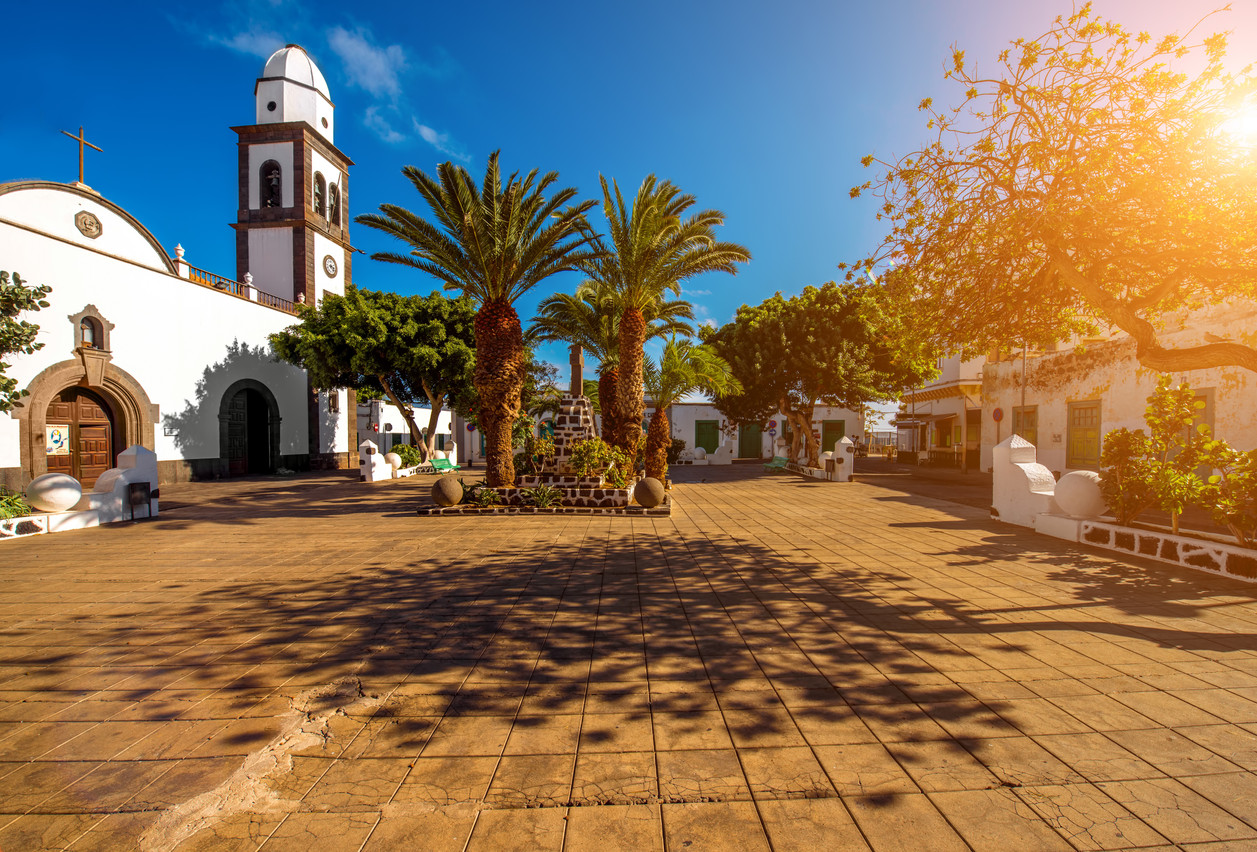On the south coast of Lanzarote and covering a 2,500m2 surface lies the underwater Museo Atlántico, featuring over 300 sculptures made of pH-neutral materials, which help foster local marine life habitats.
The museum officially opened in 2016 as the most recent collection by celebrated British artist Jason deCaires Taylor, whose work can also be seen in underwater museums in Grenada (which has been listed as one of National Geographic’s 25 wonders of the world) and Mexico, among other diving locations.
Even if you aren’t a diving aficionado, Lanzarote has other natural wonders to explore on land.
Take, for instance, Timanfaya National Park, one of the core areas of the UNESCO-designed Biosphere reserve that defines the entirety of Lanzarote. Buses run daily, shuffling visitors to see the point of the Islote de Hilario volcano as well as the otherworldly, striated formations. An alternate way of seeing the park is by camel, starting from Yaiza, around 3km from the park.
The focal point of a vast black landscape is the Islote de Hilario volcano. Buses take you around the park to see the extraordinary striated rock formations. But that’s only the start…
Lanzarote’s native son
Visitors to the park will no doubt notice its symbol, the El Diablo Restaurant, designed by native artist and architect César Manrique. Here you can taste fish or meat, all cooked on a grill heated by the volcano.
In fact, Manrique, who was born in Arrecife, Lanzarote, has works sprinkled throughout the island, the easternmost of the Canaries. Each has its own history--from the 400m high Mirador del Río, a marriage of art and nature, to another wonder of the world (according to Rita Hayworth, anyway), the Jameos del Agua. The latter is Manrique’s vision in a lava tunnel with a lagoon and stunning views. Several shows, musicals and other events take place especially over the summer months, and the auditorium is the site of the island’s annual film festival.
If you want to delve more into the artist and architect, the César Manrique Foundation is devoted to his life and work…and you can’t miss the souvenirs that abound, many with logos he designed.
Authentic refinement
The easternmost part of the island is becoming increasingly upmarket, with stylish bars, hotels, and luxury bungalows and yurts. Costa Teguise is one of the most popular areas in Lanzarote.
Covering the island’s east coast, visitors can roam sandy beaches, or hop into Teguise proper on a Sunday morning for the local street market.
For something a bit more local, the Saturday market at Haría in the northeast is worth a visit. And, while you are souvenir shopping, consider heading to wine country and picking up a bottle of wine, like Los Bermejos: Lanzarote missed the phylloxera plague that impacted most of Europe in the late 1800s, meaning it maintains the rich qualities of the original European grape varieties.
If you want something even more out of the ordinary, check out La Graciosa, a tiny island north of Lanzarote, which has no roads, only beach after stunning beach--with a few cosy restaurants for tasting the local catch of the day.
Intrigued? Check out:
